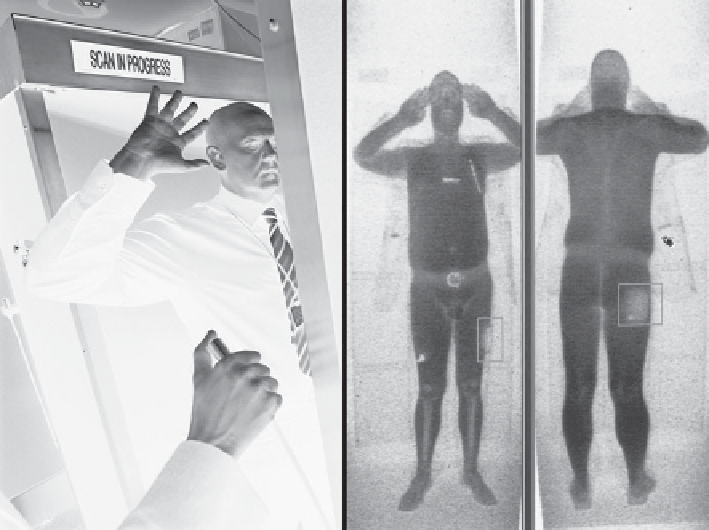Information Technology Reference
In-Depth Information
they must show an identification card and fill out a sales log with their name, address,
and signature. Two states, Oregon and Mississippi, require a prescription to acquire a
product containing pseudoephedrine.
In an effort to provide enhanced passenger security at airports, the Transportation
Security Administration began deploying advanced imaging technology (AIT) scanners
in 2007. Some AIT scanners use backscatter X-rays to produce a detailed image of the
passenger's body, and other scanners use millimeter waves. The TSA began testing AIT
systems at Phoenix's Sky Harbor International Airport in 2007 [89]. When the first
AIT system was deployed, passengers who failed the primary security screening could
choose between the X-ray scan and a traditional pat-down search. In June 2011, the
Transportation Security Administration announced that it had already deployed 500
AIT units and would deploy an additional 500 units, enabling it to use this technology to
screen 60 percent of all airline passengers in the United States [90]. Even as it was busily
deploying systems, the TSA was battling critics.
Some people were offended at the images produced by AIT scanners, which reveal
“all anatomical features” (Figure 6.7) [91]. Lawyers for the American Civil Liberties
FIGURE 6.7
When the first advanced imaging technology scanners were deployed in
American airports, they revealed anatomical features in great detail.
(© Paul Ellis/AFP/Getty
Images/Newscom)

